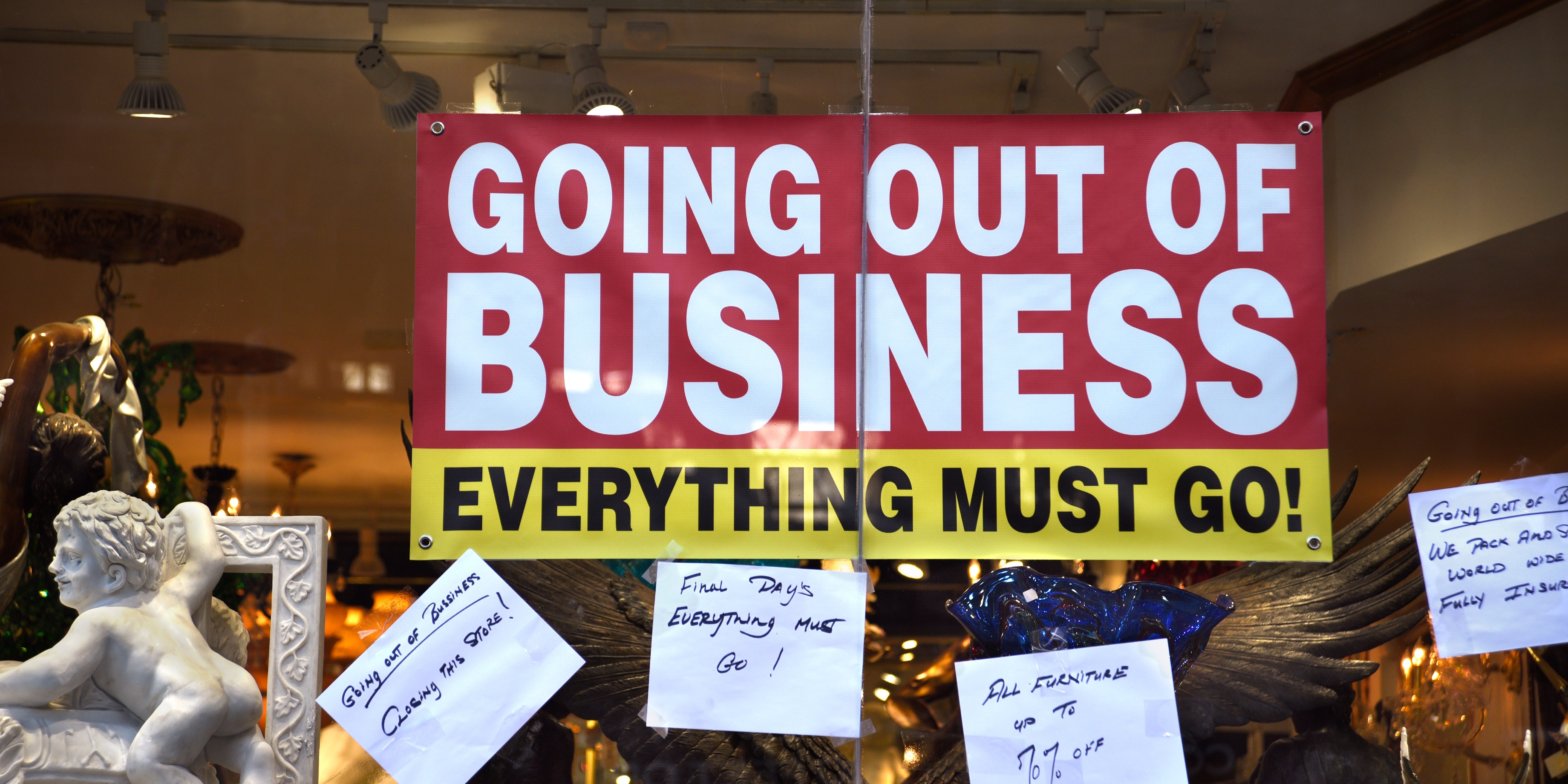A wave of corporate bankruptcies and debt defaults could rock the economy, experts say. Charles Schwab expects bankruptcies and defaults to peak at some point over the next two quarters. A spike in bankruptcies among US companies could help push the economy into a recession. Loading Something is loading.
Thanks for signing up!
Access your favorite topics in a personalized feed while you’re on the go.
There’s a wave of corporate defaults and bankruptcies that could be coming as high interest rates batter US companies.
Experts warn it could raise the odds of a recession as high interest rates take their toll on businesses and consumers alike. 459 companies have filed for bankruptcy as of the end of August, according to S&P Global. That number already surpasses the total number of bankruptcy filings recorded in 2021 and 2022.
Global corporate defaults just surpassed the total defaults recorded in 2021 and 2022. S&P Global It’s not just the US, either. Defaults on corporate debt have been rising globally, a sign that higher interest rates around the world are starting to bite as central banks keep up the fight against inflation. There were 107 corporate debt defaults globally in August, the highest monthly total since 2009, a separate S&P Global report found.
Corporate debt defaults just notched their highest monthly tally since 2009 in August. S&P Global Charles Schwab director and fixed income strategist Collin Martin estimates that borrowing costs for some firms doubled or nearly tripled in 2023 compared to previous years, taking a heavy toll on corporate balance sheets.
Illustrating the rising costs for companies, effective yields for below-investment grade corporate debt have soared to 9% this month, according to the ICE BofA US High Yield Index.
The yield on the 10-year US Treasury, meanwhile, jumped above 4.8% Friday, back above the highest level in 16 years.
The ICE BofA US High Yield Index shows effective yields hovering around 9%. Federal Reserve “When corporations are managing their balance sheets and looking to issue or refinance debt, they have to issue debt with significantly higher yields than what they’ve seen over the past number of years, and that’s just a big hit to their earnings. It’s more interest they have to pay, which can affect their corporate profits in an environment where revenues are already slower,” Martin said.
He says that’s especially tough for so-called zombie firms, which are companies that don’t have the cash on hand to service their debt. Many zombie companies managed to survive in an ultra-low interest rate environment, when the cost of borrowing was close to zero and firms could keep rolling over and refinancing debt with relative ease.
But that’s changed in a higher interest rate regime, and it appears to be contributing at least in small part to the wave of distress building in the corporate sector.
Defaults of high-yield bonds are expected to notch 4.5%-5% by the end of this year, according to Fitch Ratings, more than six times the 0.7% default rate recorded among all high-yield bond issuers in 2021.
Recession fearsTotal US bankruptcies and debt defaults are likely to surge into 2024, Martin said. The US could see defaults and bankruptcies peak sometime by the end of the first quarter of 2024, Charles Schwab estimates.
And that rise of corporate defaults and bankruptcies between now and then adds to the list of headwinds that could knock the US economy into a recession. Firms struggling through bankruptcy or with heavy debt burdens could slash their workforces as they try to get back to financial health. It’s also a negative for asset prices, specifically, for high yield bonds and bank loans, which could bleed over into pain for stock prices as well.
“If companies are struggling, that should be a negative for stock prices. And if you’re an investor and your assets are going down, the declining wealth effect might impact our spending habits. Add these dual forces of losses and lower spending … it can be something that makes the economy slow,” Martin added.
Other signs the economy may soon slow are also beginning to sprout up. Consumers are running out of excess savings piled up during the pandemic, the restart of student loan payments is set to pressure spending, and soaring bond yields are set to ratchet up borrowing costs all throughout the economy.
Meanwhile, the yield curve — the bond market’s notorious recession gauge — has started to de-invert, something market experts say has historically signaled a recession could be coming in the near term.
